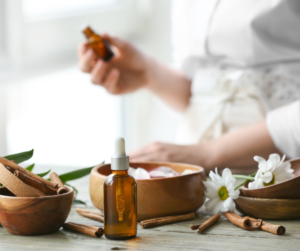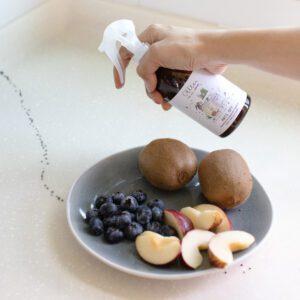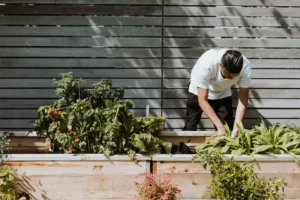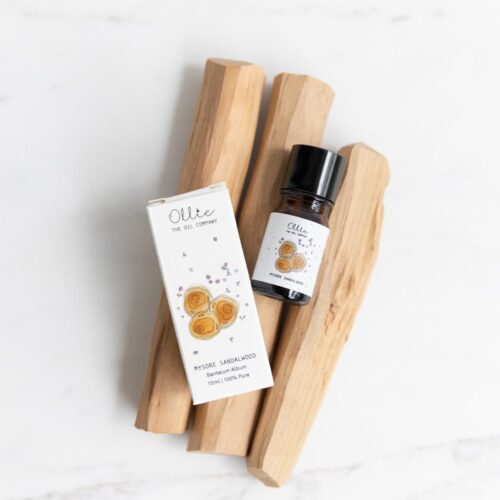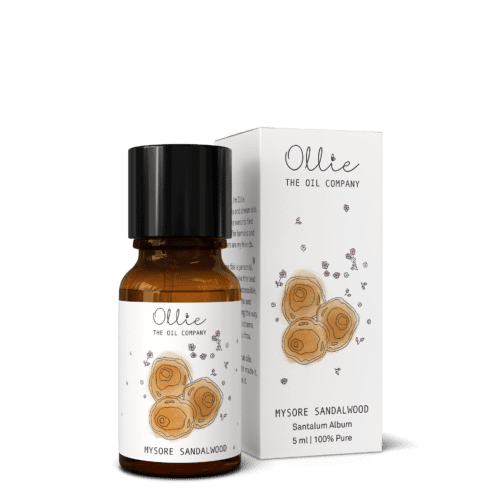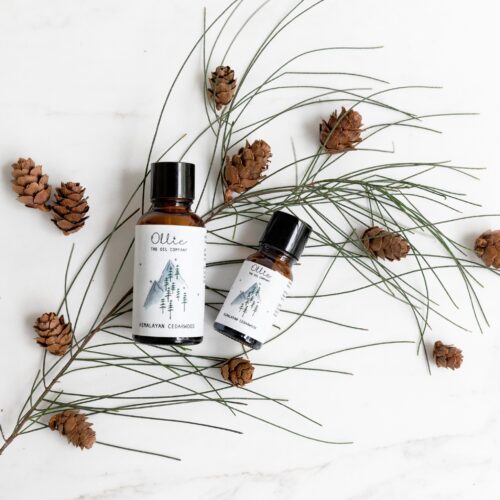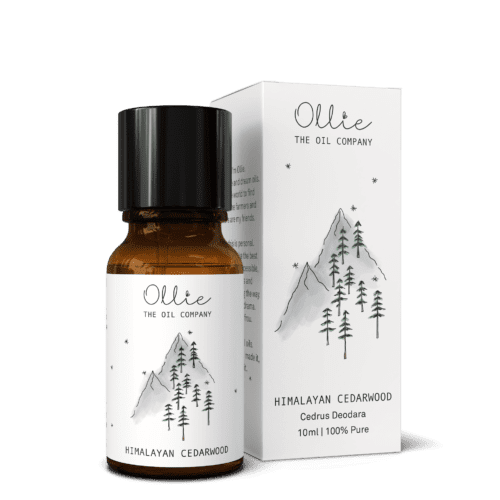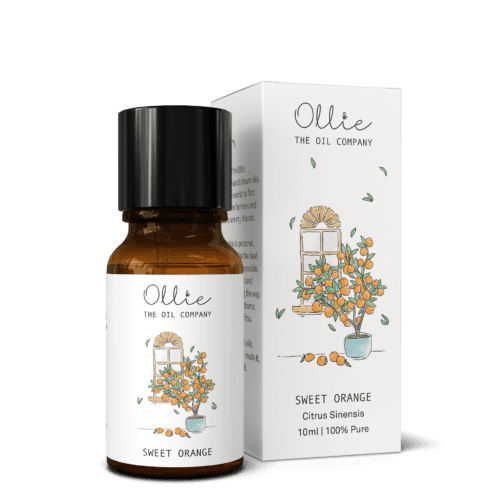Curious about how you can use essential oils?
- There are multiple ways to use essential oils — aromatically, topically, and internally.
- The aromatic method is the most popular way of using essential oils.
- Popular aromatic methods include incense sticks, spray bottles…and many more!
How to Use Essential Oils Without A Diffuser
You received a set of Ollie’s essential oils for your birthday gift from Great Aunt Gladys, and now you’re wondering how to use them. You’ve probably seen words like diffusers and blends from your online search. It all can seem very confusing, I know! I, Ollie, am here to help you explore aromatherapy in the simplest way possible, so beginners like you can find joy in using essential oils.
A brief introduction to essential oils and aromatherapy
Essential oils are the aromatic plant oils that are extracted from various parts of a plant (usually leaves, roots, stems, or flowers). These oils have medicinal properties and are multipurpose. So you can use them for skincare, air fresheners, aromatherapy, add it to home cleaning products, and a whole range of things. Aromatherapy is the aromatic usage of plant-based compounds to boost health and well-being. Essential oils are the main components of aromatherapy. Research has shown that regular aromatherapy sessions improve physical and mental health. Check out my Aromatherapy 101 guide for a concise and comprehensive start to your essential oils and aromatherapy journey. I have explored the Why & How of aromatherapy in that article.
Methods to use essential oils in aromatherapy
There are a myriad number of ways to use essential oils in aromatherapy. If you are a beginner, it can get confusing. Simply put, you can use essential oils in any way that makes use of their aromatic properties. This includes, but is not limited to:
- Diffuser machines
- Reed diffusers
- Incense
- Inhalers
- Spray bottles
This brief list just captures the more common methods of using essential oils in aromatherapy. Once you are comfortable using essential oils, you can even experiment with your own methods of using essential oils. My blog contains great aromatherapy recipes and methods for each essential oil. Just have a quick look through! You can also use essential oils in skin salves, bath salts, and so much more. But this article will specifically focus on the aromatic use of essential oil rather than the topical or internal use.
What are aroma diffusers?
Many aromatherapy practitioners suggest using an aroma diffuser for your aromatherapy sessions. This is undoubtedly the most popular method in aromatherapy. An aroma diffuser is a machine that disperses the essential oils around a room.
The diffuser does this by releasing a jetstream of water vapour which carries the oils around the room. A major benefit of using an aromatherapy diffuser is that it maintains the purity of the essential oils. It also gives you a fresh and unadulterated fragrance.
A diffuser is a great investment if you want to use aromatherapy regularly. Diffusers are soothing and can improve sleep, indoor air quality, and ward off air-borne diseases. But, diffusers are expensive!
There are other ways of aromatherapy that make use of similar properties of scent diffusion such as candles, spray mists, and roll-ons. These also deliver similar results as using an aroma diffuser. If I had to absolutely recommend one tool for aromatherapy, it’d be a diffuser. But if you are not keen on buying a diffuser or find it unsuitable for your needs, there are other options. Keep reading!
Alternatives to aroma diffusers
A diffuser is not needed to get the most out of your essential oils. There are many simple and creative ways to use them without buying an expensive diffuser.
Spray Bottle
This is one of my favourite ways of using essential oils. It is so simple yet effective. Grab any old spray bottle (remember to clean it first with soap and water) and add a few drops of your favourite essential oils to some water or some rubbing alcohol. Give it a good shake before you use it every time. My articles on the different essential oils I sell have some cool spray-bottle recipes that you can try at home.
In the bath
Adding a few drops of essential oils to your bathwater is an amazing way of relaxing your body, improving skin conditions and blood circulation. This method is also known to improve your mood. But if like most Singaporean households, you don’t have an actual bath-tub to use essential oils, try my melting cube recipe to make an essential oil cube that melts in the warm steam of your shower. You can use any essential oil of your choice for this recipe.
Palm method
This method is as simple as just adding one or two drops of essential oils to your palm and breathing in the scent deeply. Ollie Warning: Never inhale essential oils directly from the bottle. The fumes could irritate your nasal passages. Instead, dilute 1 or 2 drops of essential oil in a teaspoon of carrier oil — such as coconut oil — and rub on your palms. Cup your palms and deeply breathe in the scent.
Essential oil inhaler
The benefits of using an essential oil inhaler are numerous. They are super easy to make and can be carried anywhere. They don’t bother those who might not like the smell of essential oils. Plus, the aroma of the oils lasts a really long time. You can make your own essential oils inhaler in just 5 minutes! All you need are:
- Cotton wick
- Tweezers
- Inhaler tube, cap, and cover
Inhaler containers can be found very cheaply online. Follow these simple steps to make your own inhaler:
- Keep all the parts of your inhaler ready.
- Add 10-15 drops of your favourite essential oils in a glass bowl. You can use more than one type of oil. Use my Aromatherapy 101 guide to read about which oils go best together.
- Use tweezers to roll your cotton wick in the essential oils.
- Once the oils have saturated into the cotton wick, use your tweezers to place the wick into the inhaler.
- Next, screw in the cap at the bottom of the inhaler. Remember to close it tightly.
- Finally, put the cover on your inhaler. Always keep your inhaler covered when not using it.
Reed diffuser
These are great for small enclosed spaces like bathrooms, storerooms, and kitchens where having an aromatherapy diffuser might not be possible. Reed diffusers are a very aesthetically-pleasing addition to your surroundings and gently diffuse the aroma of the essential oils in the air. They last for months and are very easy to make. Online reed diffusers can be pretty pricey, but who says you can’t make your own? This is a great weekend DIY project! Make your DIY reed diffuser in just 5 minutes with these simple ingredients! Here’s what you need:
- A glass/ceramic vase or container with a narrow opening.
- 5-6 Bamboo skewers (cut off the pointy ends). Alternatively, you can buy your own reed diffuser sticks online. They’re fairly inexpensive.
- 20-30 drops of your favourite essential oils (I recommend lavender oil + lemon oil)
- ½ cup canola oil or fractionated coconut oil (or any thin carrier oil of your choice)
That’s it! Excited to get started? Read on!
- Add the carrier oil to the glass container.
- Add your favourite essential oils to the container. Swill gently to get the oils to mix.
- Stick the bamboo skewers or reeds in the jar. Remember to cut off the pointy ends with a pair of scissors first!
- Give the glass container a gentle swirl.
- Turn over the reeds to the other end every few days.
Each batch of reed diffuser blends lasts a few months. Make a new batch once the scent has disappeared. Use a fresh set of skewers or reeds for each new batch.
Popular essential oil blends
Now that you have an idea of how to use your essential oils, try some of my favourite essential oil blends. They are classic recipes and variants of these are really popular within the essential oils community. These aromatherapy blends are a perfect combination of health-restoring and wellness enhancing effects. You can use these blends in any aromatherapy method such as the ones above.
Summer Citrus
This blend is a colourful smelling combination of Himalayan Lavender Oil and citrus essential oils. This is one of my favourite blends and instantly reminds me of summer vacations spent frolicking in the sun and chugging down lemonade.

You can adjust the number of drops in this blend depending on which aroma methods you are using. For reed diffusers and inhalers, you might want to use more drops, but in the same ratio.
Autumn Blend
While most tropical countries like Singapore do not have an autumn season, those of you avid travelers who crave the autumn scents of areas further north will love this essential oil blend.

This blend also keeps at bay air-borne microbes because of its antimicrobial properties and helps to clear stuffy sinuses.
Zen-out Blend
This essential oil blend is my go-to for days when I am feeling stressed. It relaxes me within minutes and helps me focus better. Something about the scents of frankincense, eucalyptus, and lavender helps me relax deeply.

Transcendence Blend
This essential oil blend promotes feelings of spirituality, improves meditation practises, and calms the mind as well as uplifts your mood. It makes use of essential oils that are traditionally used in spiritual practises.

This blend is great to use with incense sticks and reed diffusers. If you are using a reed diffuser, multiply the amount of essential oils suggested above by 5.
Immunity booster blend
With COVID-19 and other nasty bugs in the air, this immunity booster essential oil blend will help you fight off infections better. This blend kills microbes — especially airborne microbes — and gives the immune system that extra boost it needs to protect you.

This blend contains very powerful antimicrobial and immunity improving essential oils. You can use it in diffuser blends or spray bottles with this same ratio. This blend can also be incorporated into a hand sanitiser or surface cleaner recipe. You can find out how from the recipes on my blog!
Takeaway
Using essential oils can be fun and provide you with an organic way to boost your health and wellbeing. Aromatherapy doesn’t need expensive diffusers or fancy gadgets. There are many inexpensive DIY methods to help you use essential oils.
Plus, you can even rope in your friends and family to take part in your DIY essential oil creations. It’s a great way to bond and learn more about essential oils and aromatherapy. Every essential oil recipe can be tweaked according to your preferences. Have a quick look through my blog for informative articles on the various ways to use essential oils.
Having some basic knowledge of the properties of essential oils and how they work will make your aromatherapy experience all the more satisfying! An Ollie caution: Always buy your essential oils from brands that are transparent about where they source their oils from and those that have stringent quality checks. Beware of brands that advertise their essential oils as plant-derived or fragrance oils.
These usually contain artificial fragrances or oils mixed in and are not to be used for aromatherapy. At Ollie, I emphasize quality and sustainability. All my essential oils are 100% pure and are procured from farms that focus on sustainable growing and harvesting of their essential oil-producing plants.
Every bottle of Ollie oil that you buy undergoes strict testing to ensure you get the best of essential oils. My essential oils are specifically geared for aromatherapy.
Get your range of essential oils from my online store and try your hand at different blends. Also, remember to share your experience on Instagram by tagging me @Ollie_Oils. Follow me on Facebook — @itsollie_oils — as well to stay abreast of our latest offerings!





